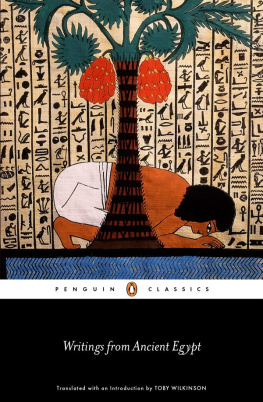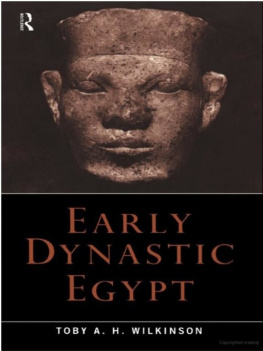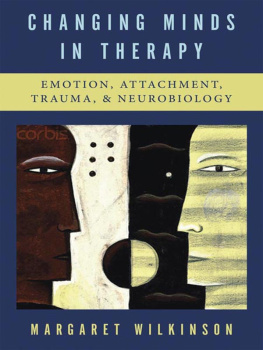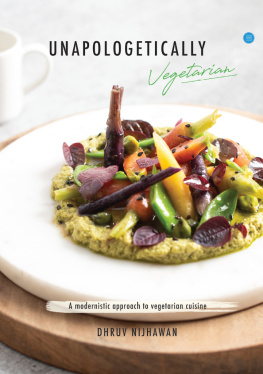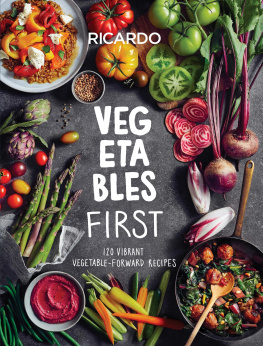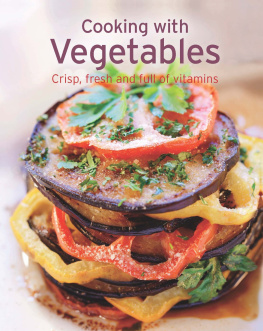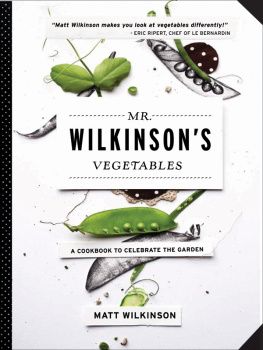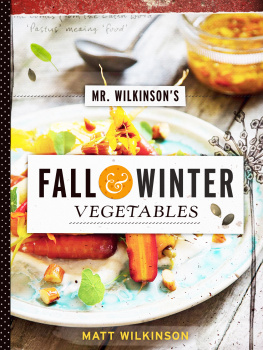Also Available
CONTENTS
A GREEN THUMB
SO WHY A BOOK ON VEGETABLES, I HEAR YOU ASK
Its quite simple. Thinking about the vegetables first is how I cook. I look to the season we are in to get my ideas about what will be on the menu where Im working or what I will eat at home that night, and there is no better way to find out what is in season than looking at the often underrated vegetable. I build my dish around what vegetables are in season because this is when they will be the cheapest, most readily available and, most importantly, taste the best and surely this has to be the most important factor when cooking. Its a simple concept that when things are in season they taste so much better But, then, how have we lost this simple thought process to eating? Look at each season. In spring, I walk into the garden and I feel alive there is a fresh and crisp feeling in the air and soil, the trees are budding and their leaves have sprung forth. When I harvest the beans or peas from their stalks, there is a zingy snap to them whether cooked or raw they taste so sweet. In summer, the earth is warmed and the plants almost hot to touch; with careful watering, they stay alert as though they are ready for battle. Just close your eyes and think of the smell of tomatoes its unmistakable and makes my mouth salivate waiting for the first bite. Autumn arrives and the mood around the garden softens, the plants are readying themselves for the cooler weather. The vegetable patch has had a great time; the basil, sorrel, spinach and silverbeet (Swiss chard) are looking magnificent and the butternut pumpkins and zucchini (courgettes) are still going great guns. When winter arrives, I add the years compost and some manure to the soil and look at my blooming red cabbages that have been in the ground for so many months now. The broccoli is so alive and glowing such a deep green that I think I might harvest it for dinner tonight, and the salad leaves are crisp and so fresh.
Once I have decided what seasonal bounty to make the most of, and considered how the flavours will marry together, I then add the protein to my dish, usually meat or seafood, then some carbs if needed.
If you think back to times gone by, this was the way everyone had to eat. For most people, meat and seafood were not readily available, were too expensive or were hard to store (no fridges or freezers then). Over the past fifty years, technology has meant we can be a little lazy in our food thinking, with great cuts of meat and seafood on hand. Today a lot of people think about what protein they feel like eating will it be beef or chicken, fish or pork? Then what starch will be added to bulk out the meal and, as a final touch, throw in a few vegetables. This is where Im a little different with my veg-first approach. I hope you feel inspired, while reading this book, to try the old-fashioned method to choosing the vegetable first. Vegetables are so much more diverse in flavour, types and availability than any old piece of meat.
MY FAVOURITE VEGETABLES?
You might also be wondering how I arrived at the list of vegetables included in this book. Well, I cant begin to tell you how hard it was to select them. (In fact there is even one vegetable in the book that I do at times detest. Ill leave that one for you to discover, kind of a Wheres Wally element to the book.) But let me tell you about some vegetables I didnt have room to include: the sweet, earthy and diverse celeriac (celery root) and its sweeter, sexier looking cousin, celery; the Welsh national emblem vegetable, the grand ole leek; two personal favourites of mine that have the same ending name but come from different families the delightful and thistle-looking globe artichoke and the earthier yet knobbly Jerusalem artichoke (also known as sunchoke); and lastly the glorious funghi family, which some of us hate but others love (technically not vegetables, although they too come first when I am planning a meal). Perhaps, one day, there will be book number two, where I could include these: The Favourite Vegetables Mr Wilkinson Forgot.
However, this being said, twenty-three out of the twenty-four vegetables in this book I could not live without (and, in writing the book, Ive come to appreciate even the one I had long disliked). I do hope you enjoy the recipes, the little history about them, how I grow them and what they mean to me. Growing, cooking and eating vegetables is healthy, better for the planet than a diet heavy in meat and, best of all, means meals full of flavour and diversity.
TWO ESSENTIAL TIPS
Ill take this opportunity to give you two cooking tips that I really think you will appreciate and incorporate into your culinary repertoire whether its for use with this book or any others you may have.
1. How frustrating do you find it when, after a meal, you have all the cooking dishes to clean up? Personally it annoys me. So simply clean as you go. Take time out of the cooking process to clean up after yourself and try to use the same pot or pan again if you can. Otherwise, if you have children, never mind making them wash up is a good way for them to earn their keep.
2. This tip will help you immensely if you do it. Cooking should be fun, relaxed and certainly not a chore. If you follow these simple steps when looking at a recipe, I promise you, they will help you to be more organised and less stressed:
After you have chosen the dish and recipe you would like to cook, sit down, have a cup of tea or glass of wine and have a pen and notepad at the ready.
Read the ingredients list and method thoroughly.
Have a sip of your chosen beverage, then read the recipe again.
Now, write out the ingredients list with measurements of those you need to go and buy.
Have another sip.
Now write out the method in your own words, not copying, but your own words.
Sip number three.
Then check that you have the correct ingredients, method and you know what you need to purchase.
Close the book and do not open it again. Use your notes to cook from. This helps for a few reasons. First, when you write the method in your own words you will understand it more clearly when following the steps. Second, you dont dirty your precious cookbook with cooking marks. And third, you are starting your own personal cookbook . You can adapt the recipes to your liking and they are at hand when and if you need them in the future.
Try this out, it helped me immensely and will help you too. Trust me, Im from Yorkshire.
(ASPARAGUS OFFICINALIS)
I may harp on a lot about eating vegetables only when they are in season but honestly, wherever you are in the world, is there really any other vegetable that you would live without for a whole year, just waiting for the next brief season, except the beautiful asparagus?


